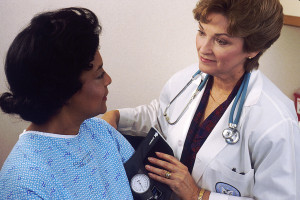
Dr. Mark Gold's Research You Can Use
Unhealthy alcohol use is defined as a spectrum of behaviors, ranging from risky drinking to alcohol use disorder (AUD), by the US Preventive Services Task Force (USPSTF). It is the third leading cause of preventable mortality in the United States. The recent USPSTF update to the 2013 recommendation encompasses the standardization of screenings for Unhealthy alcohol use in primary care settings among adolescents and adults.
The USPSTF commissioned a systematic review of the existing evidence related to the efficacy of screening in the reduction of excessive alcohol use morbidity, mortality and associated risky behaviors and consequently, improve health, social and legal outcomes.
The systematic evidential review examined the effectiveness of screening to:
- Reduce
- Unhealthy alcohol use
- Morbidity
- Mortality
- Risky behaviors
- Improve
- Health
- Social
- Legal outcomes
- The accuracy of various screening approaches
The review also examined the effectiveness of counseling interventions to:
- Reduce
- Unhealthy alcohol use
- Morbidity
- Mortality
- Risky behaviors
- The harms of screening and behavioral counseling interventions
- Improve
- Health
- Social
- Legal outcomes
- The accuracy of various screening approaches
Morbidity and mortality associated with unhealthy alcohol consumption
One of 10 deaths among American adults, aged 20 to 64 years, can be associated with excessive alcohol use. In the United States, an estimated 88, 000 deaths each year were attributed to alcohol use, from 2006 to 2010.
 Of these 88 000 deaths, 44 percent were due to chronic conditions (such as alcoholic liver disease) and 56 percent were a result of acute conditions (such as injuries from motor vehicle collisions).
Of these 88 000 deaths, 44 percent were due to chronic conditions (such as alcoholic liver disease) and 56 percent were a result of acute conditions (such as injuries from motor vehicle collisions).
Excessive alcohol use also contributed to 3.2 percent to 3.7 percent of cancer deaths, including breast, gastrointestinal, oral cavity and neck cancer.
In the adolescent population, aged between 12 and 17 years, 9.2 percent reported being current alcohol users and 4.9 percent report binge drinking in the past month. Around 488,000 adolescents met the AUD diagnostic criteria for AUD. About 1 in 4 college students reported alcohol use as a major contributor to missing or lacking behind in classes, low grades, and poor academic performance.
In 2010, excessive alcohol use cost the nation an estimated $249 billion in losses in workplace productivity, health care expenditure, criminal justice costs, and motor vehicle collisions.
Alcohol use during pregnancy can result in preterm birth and low birth weight. It is a leading preventable cause of congenital disabilities and developmental disabilities, including fetal alcohol spectrum disorders, and adversely influences the development of the fetal brain, endocrine system, gastrointestinal tract, heart, kidney, and liver.
USPSTF assessment of screening tools
Data were reviewed from 45 studies that focused upon the accuracy of screening tools. Studies assessed a range of screening tests for the detection of unhealthy alcohol use. The screening tools took into account an array of elements including the quantity if drinks, frequency of drinking or the total number of drinks over a specified period.
This was in combination with a variety of response categories and cutoffs. Reference standards were built upon structured diagnostic interviews, occasionally used in conjunction with other instruments.
Adults
Given the available screening tools, the USPSTF determined that 1-item to 3-item screening instruments demonstrated the best accuracy for the assessment of unhealthy alcohol use in adults.
These included the abbreviated Alcohol Use Disorders Identification Test-Consumption (AUDIT-C), comprising of 3 questions regarding frequency, typical quantity of alcohol use and heavy use instances, and the NIAAA-recommended Single Alcohol Screening Question (SASQ) inquiring about binging episodes in the past year.
 The researchers proposed that a patient screening positive on a brief screening instrument with higher sensitivity and lower specificity should be followed-up with a more in-depth risk assessment with greater specificity (such as AUDIT) to confirm the diagnosis and determine following steps of care.
The researchers proposed that a patient screening positive on a brief screening instrument with higher sensitivity and lower specificity should be followed-up with a more in-depth risk assessment with greater specificity (such as AUDIT) to confirm the diagnosis and determine following steps of care.
The Comorbidity Alcohol Risk Evaluation Tool (CARET) is used in older adults. The Alcohol, Smoking, and Substance Involvement Screening Test (ASSIST), developed by the World Health Organization (WHO), screens for substance and alcohol use in adults.
Pregnant women
Screening instruments are also specifically designed for different populations. Screening tools for pregnant women included Tolerance, Worried, Eye-opener, Amnesia, Kut down (TWEAK); Tolerance, Annoyed, Cut down, Eye-opener (T-ACE); Parents, Partner, Past, Present Pregnancy (4P’s Plus); and Normal drinker, Eye-opener, Tolerance (NET). No studies among pregnant women reported on the test accuracy of any screening test for alcohol use or unhealthy alcohol use.
Adolescents
The NIAAA and American Academy of Pediatrics recommend the Car, Relax, Alone, Forget, Family, Friends, Trouble (CRAFFT) screening instrument for identifying risky substance use in adolescents. The NIAAA also recommends asking patients about their own alcohol use as well as their friends’ alcohol use.
Weighing in the harms and benefits of screening and interventions
The review was unable to find any studies that directly assessed the efficacy of screening for unhealthy alcohol use in primary care settings to result in reduced alcohol intake, decreased risky behaviors and any enhancements in health, social or legal outcomes.
Possible harms of screening included the associated stigma, labeling, discrimination, privacy concerns, and interference with the patient-clinician relationship, the authors suggested. No studies, however, assessed the harms of screening for unhealthy alcohol use.
Intervention among adults resulted in a 14 percent increase in participants drinking within recommended limits. For pregnant women, interventions doubled the odds that women remained abstinent from alcohol during pregnancy.
The USPSTF concluded that screening and brief behavioral counseling interventions for unhealthy alcohol use in a primary care setting for adults, including pregnant women, yielded modest net benefit. Given the non-invasive nature of screening and behavioral counseling interventions for unhealthy alcohol use, the USPSTF determined the potential of adverse consequences to be small to none in adults and pregnant women.
 Evidential support for determining the pros and cons of screening for unhealthy alcohol use in a primary care setting in adolescents remained insufficient and inconclusive, however.
Evidential support for determining the pros and cons of screening for unhealthy alcohol use in a primary care setting in adolescents remained insufficient and inconclusive, however.
Evidence on the effects of interventions to reduce unhealthy alcohol use in adolescents was limited to two trials.
Both trials found mixed results for reduced alcohol use. Several trials in younger adults found that beneficial effects appeared at six months but were no longer statistically significant at 12 months, suggesting that beneficial effects may deteriorate more quickly in younger adults.
The holes in the evidential data pose serious problems, and authors call for further research to focus on providing better guidance and training to clinicians and health care providers regarding their role in preventing and mitigating the adverse effects of unhealthy alcohol use.
Despite inconclusive data, USPSTF, World Health Organization and the American Academy of Pediatrics recommend screening and brief counseling for unhealthy drinking in adults and adolescents.
References
1. https://www.psychcongress.com/news/screening-brief-behavioral-counseling-can-reduce-unhealthy-alcohol-us
2. https://jamanetwork.com/journals/jama/fullarticle/2714537
3. https://www.uspreventiveservicestaskforce.org/Page/Document/UpdateSummaryFinal/unhealthy-alcohol-use-in-adolescents-and-adults-screening-and-behavioral-counseling-interventions
About the Author:
 Mark S. Gold, M.D. served as Professor, the Donald Dizney Eminent Scholar, Distinguished Professor and Chair of Psychiatry from 1990-2014. Dr. Gold was the first Faculty from the College of Medicine to be selected as a University-wide Distinguished Alumni Professor and served as the 17th University of Florida’s Distinguished Alumni Professor.
Mark S. Gold, M.D. served as Professor, the Donald Dizney Eminent Scholar, Distinguished Professor and Chair of Psychiatry from 1990-2014. Dr. Gold was the first Faculty from the College of Medicine to be selected as a University-wide Distinguished Alumni Professor and served as the 17th University of Florida’s Distinguished Alumni Professor.
Learn more about Mark S. Gold, MD
About the Transcript Editor:
 Sana Ahmed is a journalist and social media savvy content writer with extensive research, print, and on-air interview skills. She has previously worked as staff writer for a renowned rehabilitation institute, a content writer for a marketing agency, an editor for a business magazine and been an on-air news broadcaster.
Sana Ahmed is a journalist and social media savvy content writer with extensive research, print, and on-air interview skills. She has previously worked as staff writer for a renowned rehabilitation institute, a content writer for a marketing agency, an editor for a business magazine and been an on-air news broadcaster.
Sana graduated with a Bachelors in Economics and Management from London School of Economics and began a career of research and writing right after. Her recent work has largely been focused upon mental health and addiction recovery.
The opinions and views of our guest contributors are shared to provide a broad perspective of addictions. These are not necessarily the views of Addiction Hope, but an effort to offer a discussion of various issues by different concerned individuals.
We at Addiction Hope understand that addictions result from multiple physical, emotional, environmental and genetic factors. If you or a loved one are suffering from an addiction, please know that there is hope for you, and seek immediate professional help.
Published on June 3, 2019
Reviewed by Jacquelyn Ekern, MS, LPC on June 3, 2019
Published on AddictionHope.com
